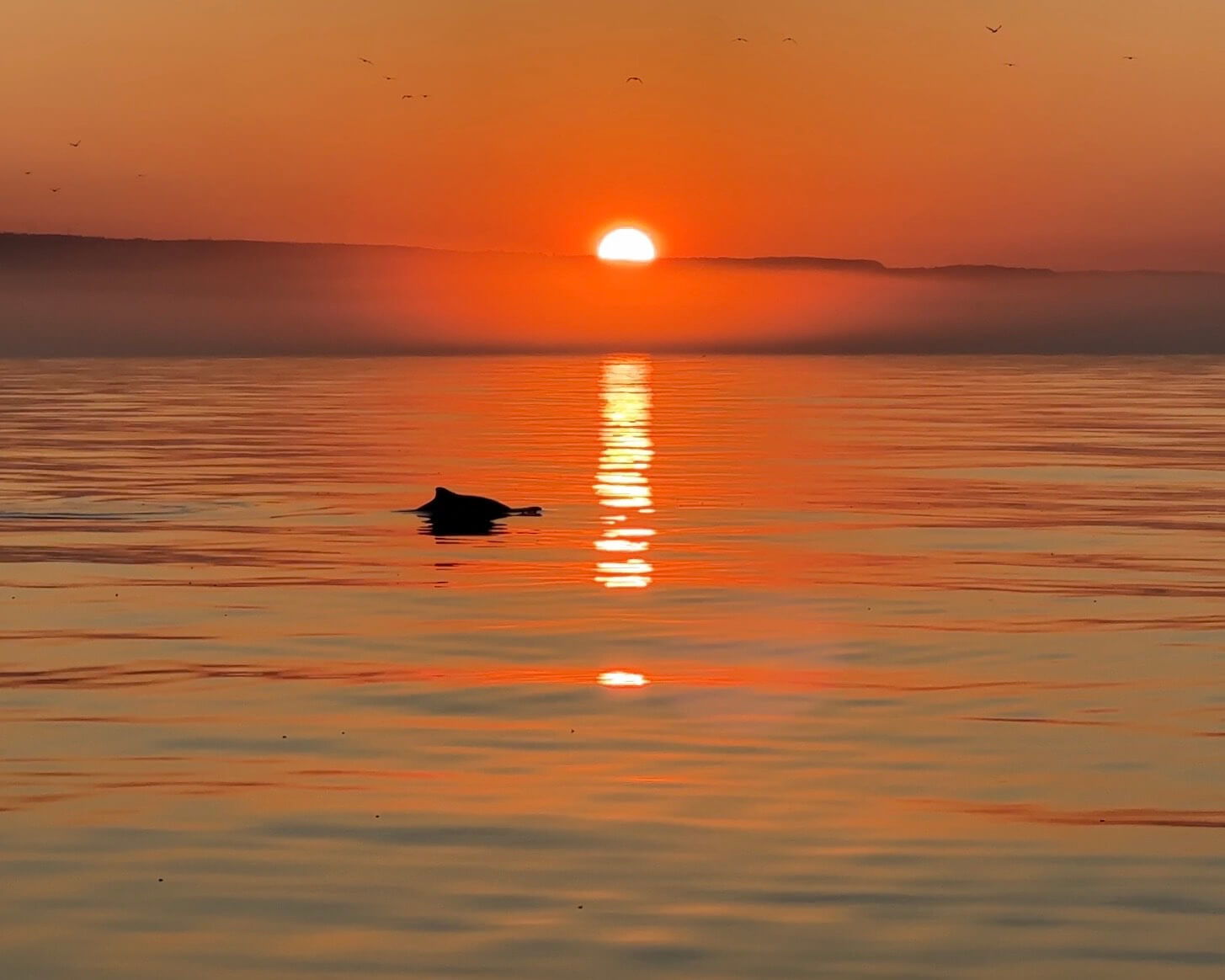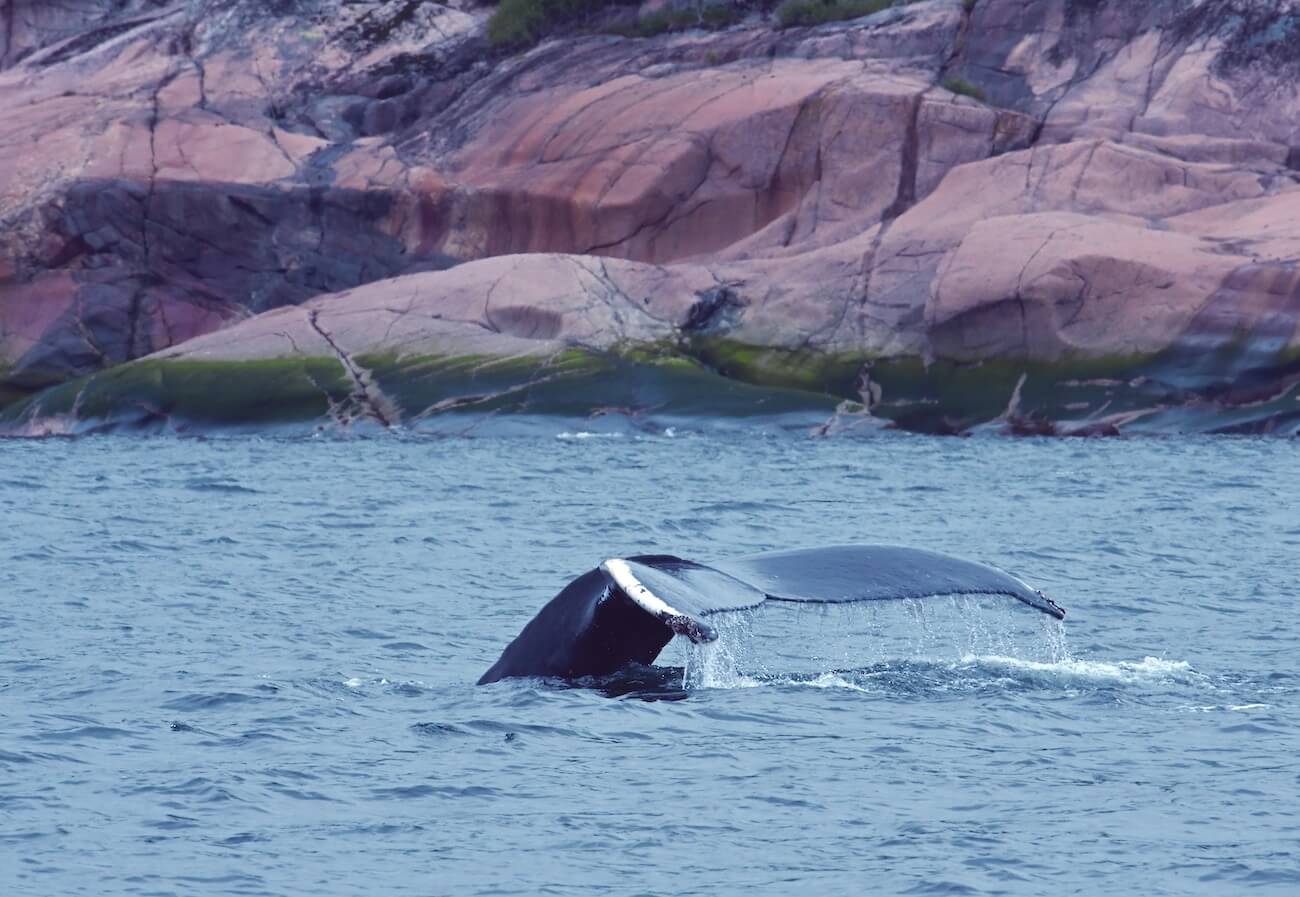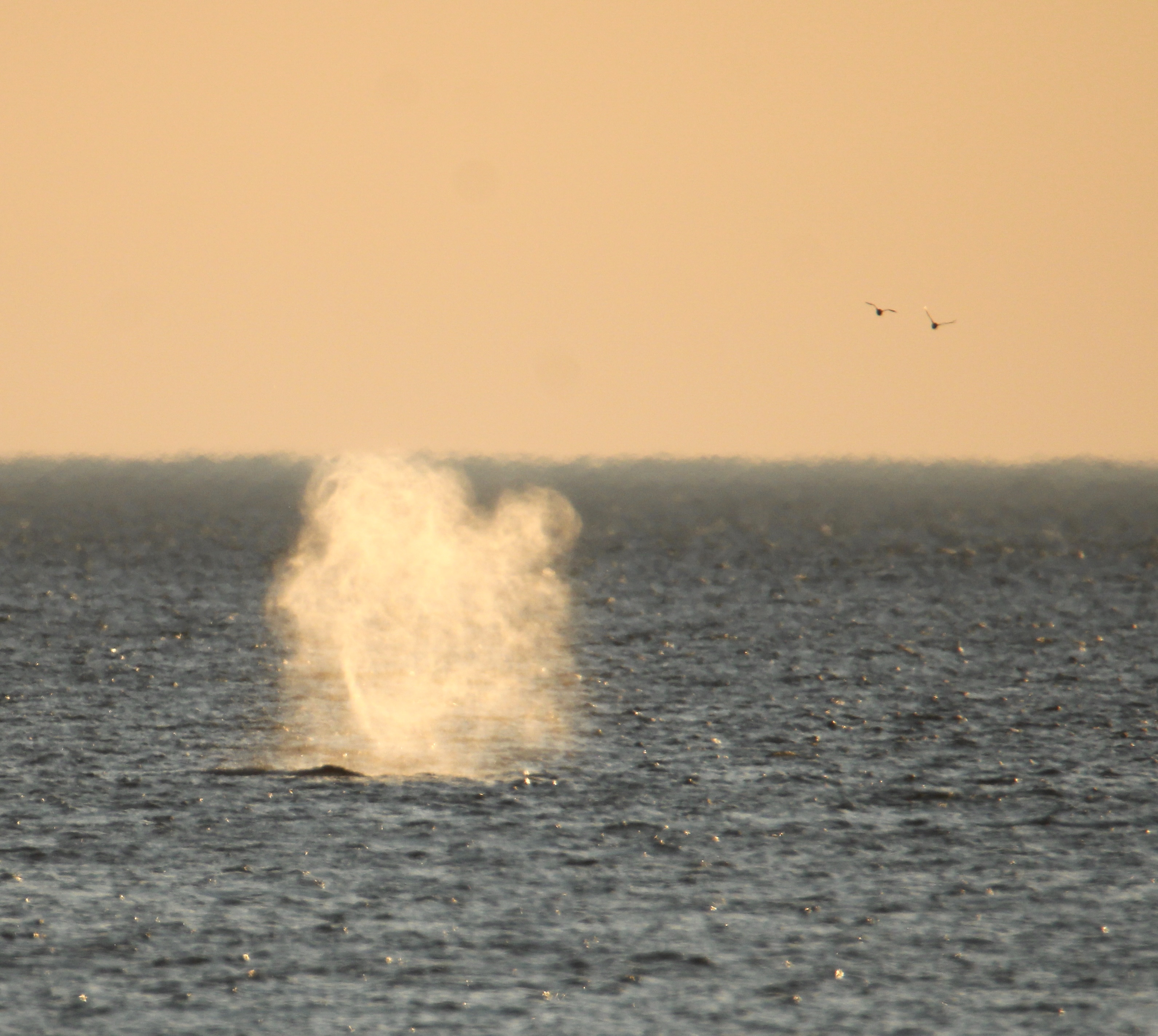“Might things be picking up in the region?” enquires one of the Mingan Island Cetacean Study (MICS) team members after several whales arrive in the region of Longue-Pointe-de-Mingan. Nearly 20 fin whales are sighted in the area. Several humpback whales are also identified: Aramis, Bad Chemistry, H822, and La Souffleuse (known in the Estuary as Le Souffleur). Near Gaspé, humpbacks Tingley, Bolt, Irisept, Siam, H692, Tracks and BBR (Gaspar) are also recognized.
Speaking of spouts… Every morning, an employee working for a whale-watching company in the Gaspé region surveys large whale blows offshore from cliffs overlooking the sea. He then notifies his team who will set course in the indicated direction to attempt to observe the whales. On July 16, he locates six fin whales in the Cap des Rosiers sector and about six humpbacks near the capes of Forillon National Park. The blows of these two species are different. That of the humpback is nearly as wide as it is high. Even if measures almost 3 m high, that of the fin whale reaches 4 to 6 m in a straight column. This is also the clue that tips off our Franquelin-based collaborator on the presence of a fin whale 500 m from shore on July 14.
Spout characteristics vary by species according to the latter’s size and the structure of its blowhole. For toothed whales, the blowhole is a simple orifice on top of the head. For baleen species, the blowhole is double and forms a bump on the animal’s head. The well separated blowholes of the right whale are responsible for the species’ characteristic V-shaped spout.
Offshore from L’Anse-à-Beaufils in the Gaspé, a captain spots a dark mass topped by a large dorsal fin. Is it a whale? The absence of a spout creates a doubt. It turns out that it is a large basking shark. Sharks, which are fish, do not have lungs for breathing like whales, which are mammals. Instead, they have gill slits. Water enters through their mouth when they swim, passes over the gills and then out through the gill slits. In the process, oxygen dissolved in the water is absorbed into the blood capillaries of the gills.
To learn more:





